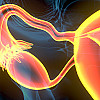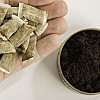Recent Blog Articles

Lead poisoning: What parents should know and do

How does waiting on prostate cancer treatment affect survival?

Does running cause arthritis?

Is alcohol and weight loss surgery a risky combination?

Preventing ovarian cancer: Should women consider removing fallopian tubes?

Healthier planet, healthier people

Is snuff really safer than smoking?

Will miscarriage care remain available?

Considering collagen drinks and supplements?

Does less TV time lower your risk for dementia?
Non-Hodgkin Lymphoma
Symptoms
Some people do not notice any signs or symptoms of non-Hodgkin lymphoma. Instead, the disease may be found during a routine doctor’s exam.
The most common symptom of non-Hodgkin lymphoma is a swollen lymph node. It feels like a painless lump under the skin in the neck, armpit, or groin area.
Other typical symptoms include
-
fever for no known reason
-
extreme fatigue and weakness
-
unexplained weight loss
-
drenching night sweats
-
a rash or very itchy skin
-
pain in the chest, abdomen, or bones.
In most cases, these symptoms are not caused by cancer. However, it is important to see a doctor if you or your child experience any of them.
Expected Duration
Some forms of non-Hodgkin lymphoma are slow-growing. Treatment may be postponed until symptoms appear. More aggressive forms of NHL require immediate treatment.
Treatment
Standard treatments for non-Hodgkin lymphoma are chemotherapy, radiation therapy, and biologic therapy. They are sometimes used in combination. Doctors may recommend watchful waiting for some patients, particularly those with slow-growing NHL.
Significant advances have been made in the care of patients with NHL. Many new treatments have been developed to specifically attack abnormalities on the lymphoma cells. The results have been promising.
Chemotherapy
Chemotherapy uses drugs to stop the growth of cancer cells. Chemotherapy drugs are usually taken by mouth or injected into a vein or muscle. They may also be placed directly into the spinal column to treat NHL in the central nervous system.
Chemotherapy regimens often involve several anticancer drugs given in cycles. This means you have a treatment followed by a period of rest. Steroid drugs may be given to relieve swelling and inflammation.
Radiation therapy
Radiation therapy uses high-energy x-rays or other types of radiation to kill cancer cells and shrink tumors. It is often combined with chemotherapy.
Radiation for NHL is usually delivered from a machine outside the body. This is known as external beam radiation. But it may also be delivered inside the body, into or near the cancer.
Biologic therapy (immunotherapy)
Immunotherapy taps the body’s immune system to kill cancer cells or limit their growth. One biologic therapy is monoclonal antibodies. Monoclonal antibodies are laboratory-made antibodies. Antibodies are proteins that respond to substances that provoke the body’s immune response.
Monoclonal antibodies are injected into the bloodstream. They may be used alone or to transport drugs, toxins, or radioactive material to cancer cells.
Stem cell transplant
Stem cell transplants are used to rebuild the patient’s blood-forming cells. This may be necessary if the cells are abnormal or have been damaged by cancer treatment.
Stem cell transplants can use stem cells (immature blood-forming cells) from the patient’s body or from a donor’s. After the stem cells are collected, they are frozen and stored.
The patient receives high-dose chemotherapy and/or radiation therapy. This kills the diseased cells. But it also damages or destroys the bone marrow. The stored stem cells are thawed and infused back into the bloodstream. They travel to the bone marrow and begin producing new blood cells.
Watchful waiting
Watchful waiting means that treatment is avoided until the patient begins to show symptoms. This may be appropriate for some patients with slow-growing, or indolent, lymphoma. Regular, careful monitoring is an important component of watchful waiting.
For pregnant women, treatment is chosen carefully to minimize its effects on the fetus.
Side effects and supportive therapy
Many treatments for non-Hodgkin lymphoma have short- and long-term side effects. Common short-term side effects include
-
nausea
-
mouth sores
-
diarrhea
-
constipation
-
fatigue
-
weakness
-
hair loss
-
low blood cell counts that can increase the risk of fever and infection
Your doctor may be able to lessen these symptoms. Some ways to do this include having blood transfusions and taking growth factors or antibiotics.
The possible long-term side effects of treatment are
-
fertility problems
-
heart damage
-
increased risk of developing a second cancer in the future including leukemia.
New medical approaches are being tested through clinical trials. You may want to consider joining a clinical trial if there is one that fits your medical and personal situation.
Prognosis
The outlook for patients with non-Hodgkin lymphoma depends on several factors:
-
the type of NHL
-
the cancer’s stage
-
the patient’s age and general health
-
whether the lymphoma is newly diagnosed or has come back.
Prognosis also depends on the blood level of LDH. This is an enzyme that increases in the presence of fast-growing tumors.
To continue reading this article, you must log in.
Subscribe to Harvard Health Online for immediate access to health news and information from Harvard Medical School.
- Research health conditions
- Check your symptoms
- Prepare for a doctor's visit or test
- Find the best treatments and procedures for you
- Explore options for better nutrition and exercise
I'd like to receive access to Harvard Health Online for only $4.99 a month.
Sign Me UpAlready a member? Login ».
Disclaimer:
As a service to our readers, Harvard Health Publishing provides access to our library of archived content. Please note the date of last review or update on all articles.
No content on this site, regardless of date, should ever be used as a substitute for direct medical advice from your doctor or other qualified clinician.
Free Healthbeat Signup
Get the latest in health news delivered to your inbox!
